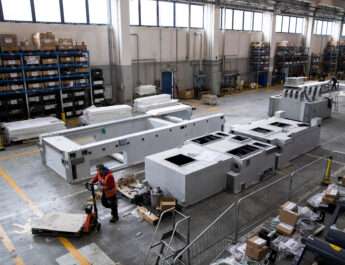Introduction
In the quick-paced world of trade, the efficiency and agility of commercial enterprise operations significantly have an impact on achievement. At the heart of this performance lies the Order Management System (OMS), a crucial thing that orchestrates the seamless glide of orders, inventory, and fulfillment strategies. This article explores the transformative energy of OMS in optimizing business operations while delving into the role of 3PL automation within this framework.
Understanding the Order Management System (OMS)
An order management system acts as the nerve center of an agency’s operations. It’s the centralized platform that oversees the whole order lifecycle, from the location of orders to their success and next shipping to customers. A sturdy OMS correctly manages stock, tracks orders across various channels, and helps with timely delivery, thereby enhancing client pleasure.
The core functions of an OMS
Order Processing: An OMS seamlessly approaches incoming orders from more than one channel, such as online stores, marketplaces, or brick-and-mortar places. It consolidates those orders into a unified dashboard for easy control and processing.
Inventory Management
By integrating with stock structures, an OMS presents real-time visibility into inventory degrees. This allows for stockouts, guarantees correct product availability, and minimizes overselling dangers.
Fulfillment Optimization
OMS optimizes success through intelligently routing orders to the maximum appropriate achievement centers or 3PL partners based totally on proximity, stock availability, and transport prices.
Streamlined Communication
It allows conversation between diverse stakeholders concerned within the achievement procedure, which include suppliers, warehouses, and logistics partners, making sure absolutely everyone is on the same web page.
Integration of 3PL Automation
Third-Party Logistics (3PL) partners play a pivotal role in the modern supply chain ecosystem. The integration of 3PL automation inside an OMS further amplifies operational efficiency. Automating 3PL approaches within the OMS framework enables:
Efficient Partner Collaboration
Automated facts exchange between the OMS and 3PL providers streamlines order transmission, inventory updates, and shipping data. This fosters smoother collaboration, minimizing errors and delays.
Real-Time Visibility
Integration with 3PL automation grants groups actual-time visibility into the motion of products, making an allowance for higher monitoring, correct ETAs, and proactive difficulty decisions.
Scalability and Flexibility
Automated 3PL tactics inside the OMS make scaling operations simpler. Whether increasing to new markets or coping with seasonal spikes in call.
Benefits of Robust OMS with 3PL Automation
Enhanced Customer Experience
The synergy between sophisticated OMS and 3PL approaches translates into quicker order processing, higher monitoring, and on-time delivery, in addition to contributing to patron satisfaction.
Operational efficiencies
By automating repetitive tasks, organizations can streamline their strategies, reduce machine errors, and allocate resources more successfully, resulting in price savings and a quicker productivity grade.
Flexibility and scalability
Flexible OMS with 3PL automation allows agencies to quickly adapt to market integration, meet evolving client desires, and without difficulty make their operations bigger.
Conclusion
A powerful order management gadget with integrated 3PL automation emerges as a cornerstone of fulfillment in state-of-the-art chaotic business surroundings Its capacity to organize and optimize many enterprise company tasks does not supply on its promise of streamlined techniques however improvements that increases with purchaser pleasure
As the enterprise modifications, it will be important to embrace the transformational potential of OMS aid through an automated 3PL procedure. This compass guides companies through the challenges of today’s dynamic market, guiding them toward operational excellence and sustainable growth.



